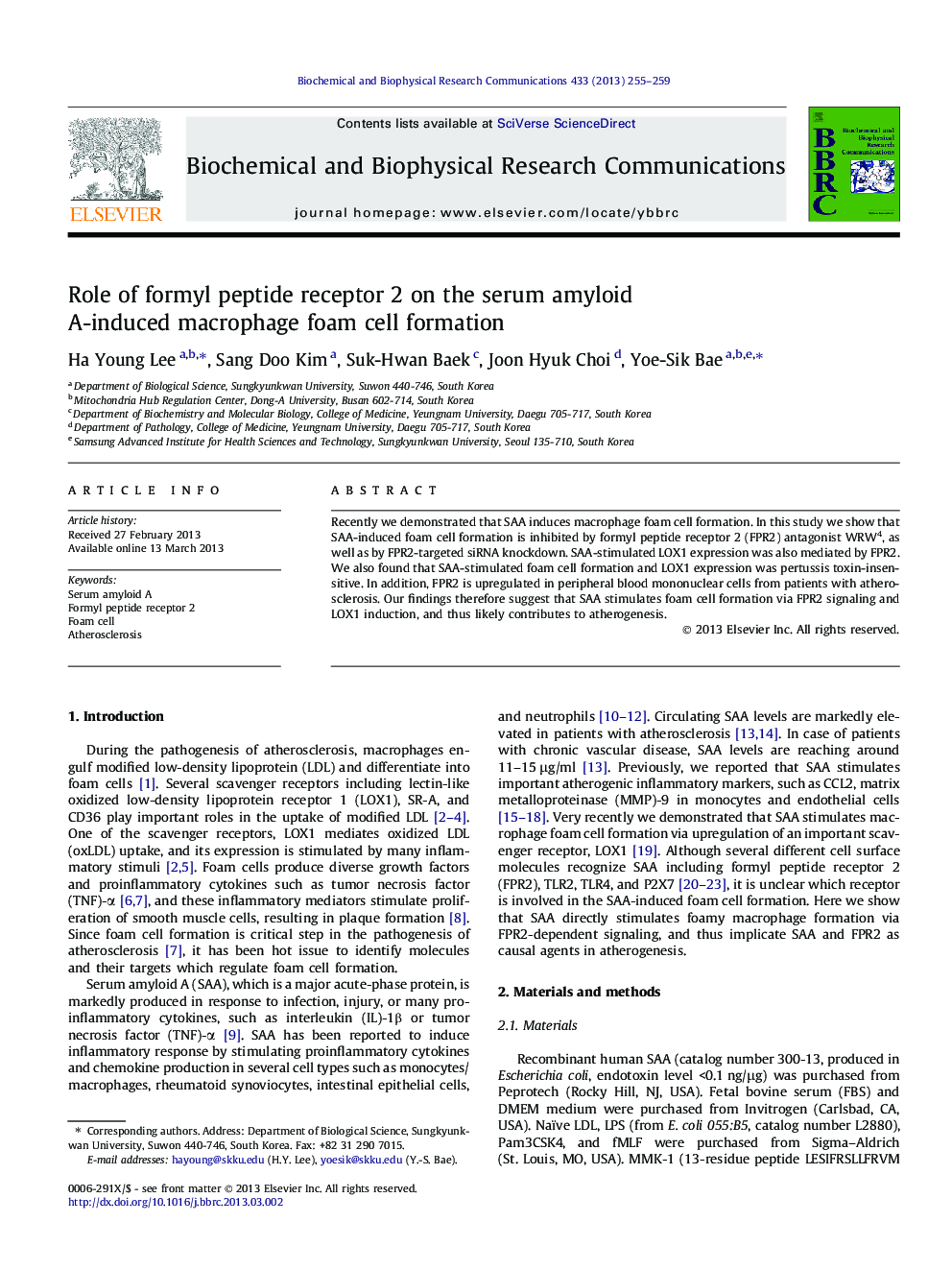| Article ID | Journal | Published Year | Pages | File Type |
|---|---|---|---|---|
| 1928739 | Biochemical and Biophysical Research Communications | 2013 | 5 Pages |
•SAA-induced macrophage foam cell formation is mediated by formyl peptide receptor 2 (FPR2).•FPR2 mediates SAA-stimulated upregulation of lectin-like oxidized low-density lipoprotein receptor 1 (LOX1).•SAA-induced foam cell formation and LOX1 expression is mediated by pertussis toxin-insensitive signaling.•FPR2 is upregulated in peripheral blood mononuclear cells from patients with atherosclerosis.•The finding reveals a novel mechanism of action of SAA and its receptor FPR2 in the pathogenesis of atherosclerosis.
Recently we demonstrated that SAA induces macrophage foam cell formation. In this study we show that SAA-induced foam cell formation is inhibited by formyl peptide receptor 2 (FPR2) antagonist WRW4, as well as by FPR2-targeted siRNA knockdown. SAA-stimulated LOX1 expression was also mediated by FPR2. We also found that SAA-stimulated foam cell formation and LOX1 expression was pertussis toxin-insensitive. In addition, FPR2 is upregulated in peripheral blood mononuclear cells from patients with atherosclerosis. Our findings therefore suggest that SAA stimulates foam cell formation via FPR2 signaling and LOX1 induction, and thus likely contributes to atherogenesis.
